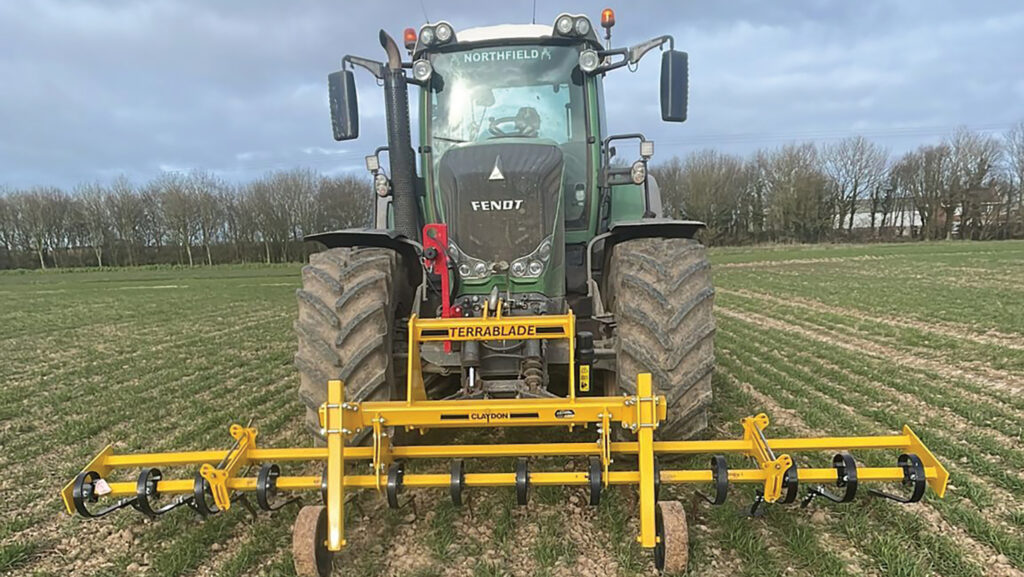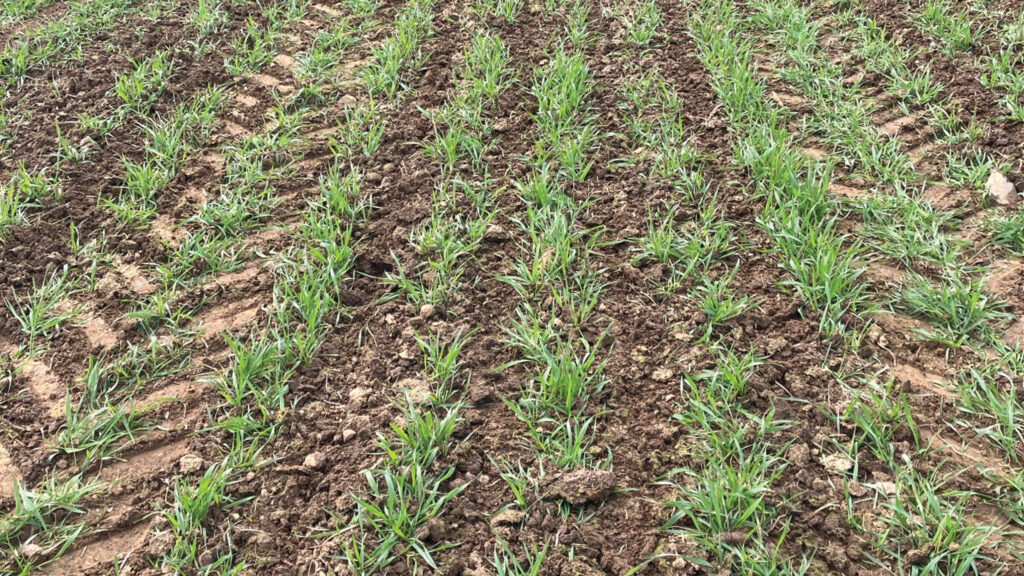Grower phases out herbicides in favour of mechanical weeding
As herbicide efficacy dwindles and fears of resistance build, East Yorkshire farmer Jonathan Hodgson turned to mechanical weeding as an additional weed control method.
Recent dry spring conditions have provided the perfect opportunity to dig out the weeder from the shed and hoe 35ha of winter wheat for blackgrass control.
Contact herbicides for control of the pesky grassweed at the spring timing have been mostly phased-out, in favour of targeted inter-row hoeing.
See also: Farmer Focus: Why do such few people exercise so much power?
“The chemistry is not achieving full control, so it is simply not worth the spend.
“Contact herbicides seems to be amplifying the problem by selectively taking out unresistant blackgrass and leaving potentially resistant weeds behind,” says Jonathan.
Instead, the herbicide focus at the 280ha arable farm is based on a strong pre-emergent programme of Avadex (tri-allate) granules and a split dose of Liberator (diflufenican and flufenacet) plus Luximo (cinmethylin) and Stomp (pendimethalin).
This is followed by a Claydon Terrablade inter-row hoe in the spring.
Benefits of the inter-row hoeing?
- Removes weeds between the rows and minimses weed burden during early stages of crop growth
- Helps reduce competition for nutrients, light, air and water, with potential to improve crop yields
- Reduces herbicide use and the risk of resistant weed types developing
- Lowers the potential for carry-over of weed seeds
- Promotes crop and root growth by improving soil ventilation and water retention
- Encourages tillering
Correct conditions

The Claydon Terrablade © Jonathan Hodgson
Jonathan describes the Terrablade as “an important extra tool in the toolbox”, but he acknowledges the correct weather conditions are required for optimum use.
The hoe performs best in dry soil conditions. Ideally, the soil should be reasonably dry with a friable, textured topsoil.
Jonathan invested in the hoe four years ago, but the previous two years he was unable to use it due to such wet and catchy spring conditions.
“When the weather eventually dried up, we were so busy drilling and getting crops into the ground, that we were at full capacity and didn’t have enough time to use the hoe,” admits Jonathan.
However, this year’s cold and dry spring provided perfect conditions for its use. Dry conditions after the pass of the weeder is also important, to ensure the weed roots have sufficient time to dry out on the surface.
“Rain can otherwise cause blackgrass to re-establish,” he notes.
Timing is critical
In autumn-sown crops Jonathan aims to hoe before stem extension when the first nodes are detected around growth stage (GS) 32.
“Crops are currently in GS30 which is the ideal timing, plus this allows the ability to go back into the crop for a second weed, if required.”
Once you start getting into mid-April, and the plant enters stem extension, Jonathan gets cautious using the hoe.
“As the crop gets thicker, the hoe can damage wheat plants and take out tillers. This is one of its drawbacks, but you have to weigh up the balance of removing weeds versus potentially taking out a few wheat tillers.
“If you don’t take out blackgrass, this would likely have an even greater impact on yield over the long-term.”
Targeted weeding

Field comparing hoed versus unhoed area © Jonathan Hodgson
The hoe is strategically used in a targeted approach. Not all fields will receive a pass.
“We walk the fields and highlight the worst patches and then make a plan of what needs mechanically weeding. So far, this season we have not hoed an entire field – only targeted the areas which need it,” he says.
The Terrablade offers a simple design at a competitive price. There is no camera guidance and instead it is manually steered. To navigate the machine, Jonathan simply uses the GPS on the same AB line the crop was drilled.
“Our wheat is on 280mm row spacing. When inter-row hoeing, you certainly benefit from wider row spacing. I would get more nervous on narrower rows as there is less room for error.”
Although designed for the Claydon Opti-Till System, the inter-row hoe can be used in any band-sown crops. Jonathan previously used a 3m Mzuri strip-till drill, but has recently upgraded to a 4m Claydon.
The hoe was originally a 3m, but thanks to a winter workshop project, Jonathan extended the machine to a 4m device to match the wider drill size.
For farmers interested in mechanical weeding, he recommends trialling one on farm or hiring a local contractor to test out whether it will suit your farming system.

Hoed wheat © Jonathan Hodgson
10-way blend helps cut fungicide use by 60%
A 10-way winter wheat blend is helping cut fungicide use by 60% at Jonathan Hodgson’s East Yorkshire farm.
Jonathan has been growing wheat blends for a number of years.
He initially started with three to four varieties, but this has since evolved to a 10-way blend – all from farm-saved seed.
The aim is to select varieties which benefit the farm, with a range of parentages to maximise diversity. “We look for varieties with a robust disease package,” he says.
This has, in turn, helped reduce reliance on fungicides, with usage falling by a significant 60%.
“We started trial work reducing fungicide use and, over time, have built up the confidence to cut back.”
Fungicides are still used on a field-by-field and variety-by-variety basis, rather than a systematic T1, T2, T3 approach.
Sap testing and nutrition also play a major role. Jonathan is Basis trained and manages the farm’s agronomy.

